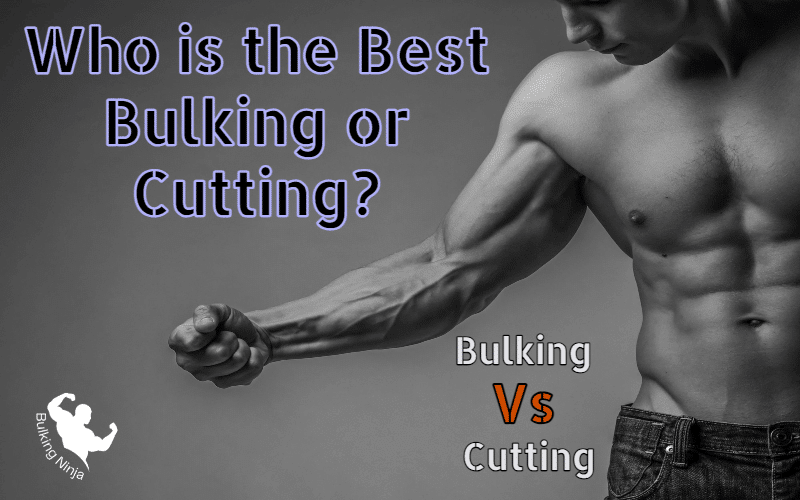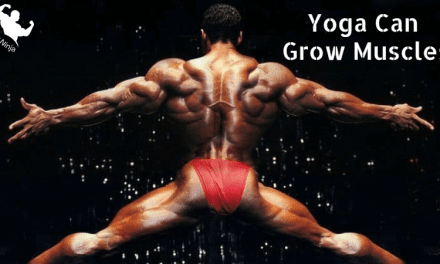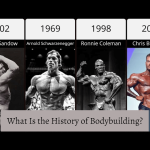In the world of fitness and body transformation, the debate over who reigns supreme—bulking or cutting—continues to spark passionate discussions and ignite curiosity. The pursuit of an ideal physique is often framed by these two contrasting approaches, both with their distinct goals and methods. But in the age-old battle of bulking versus cutting, who truly emerges as the victor? Is one inherently superior to the other, or is the answer more nuanced than it appears?
In this blog post, we delve deep into the realm of body composition and fitness, dissecting the principles of bulking and cutting, and exploring when and why each strategy shines.
The difference between gaining muscle mass and cutting, athletes and recreational gym-goers can explore specific strategies for achieving their fitness goals. The context of bulking and cutting revolves around phases and periods that involve weight gain and weight loss.
Within this article, a comprehensive exploration of the intricacies surrounding bulking and cutting is undertaken. It delves into the various aspects, encompassing both the advantages and disadvantages, while also offering valuable recommendations for successfully implementing these approaches.
Whether you’re looking to pack on lean muscle mass, shed unwanted body fat, or simply curious about the science behind these strategies, this guide will provide you with the knowledge and insights needed to make informed decisions on your path to a fitter, healthier you.
By the end of this journey, you’ll be equipped with the knowledge to discern which path aligns best with your personal fitness aspirations and embark confidently on your quest for a healthier, stronger you.
Table of Contents
- Who is the Best Bulking or Cutting?
- What is bulking?
- What is cutting?
- How to start a bulk?
- How to start a cut?
- How To Gain Muscle Mass /Bulking?
- How To Get Shredded /Cutting?
- What To Eat When Bulking And Cutting?
- Should I Shred Or Gain First?
- Can You Shred And Still Build Muscle?
- The Advantages Of Bulking And Shredding
- The Disadvantages Of Bulking And Shredding
- Differences between bulking and cutting workouts
- Frequently Asked Questions
- Conclusion
Who is the Best Bulking or Cutting?
The difference between gaining muscle mass (Bulking) and cutting, individuals can employ various techniques and strategies to achieve their fitness goals. Bulking, which involves intentionally consuming a surplus of calories, allows individuals to put on mass, especially muscle mass.
The goal of bulking is to actively increase muscle size and strength through specialized exercise and proper diet regulation. By putting on muscle mass, individuals can work towards their goal of a well-defined and muscular physique.
On the other hand, cutting focuses on intentionally eating fewer calories than what is burned, with the aim of reducing mass, particularly fat. During the cutting phase, individuals strive to maintain as much muscle mass as possible while losing excess body fat.This process requires a careful balance of nutrition, exercise, and dedication. By implementing a proper regimen, individuals can achieve a shredded appearance while preserving their hard-earned muscle mass.
Certified nutrition coaches, personal trainers like Kayla DeMarco, and experts in the field of fitness emphasize the importance of proper planning and thought when undertaking bulking and cutting.
These professionals provide guidance and support in designing specialized exercise routines and tailored diet plans that align with an individual’s goals. Their expertise helps individuals strike a balance between calorie intake, macronutrient distribution, and targeted exercise, ensuring optimal results and progress. read more about Breakfast is imporrtant for gaining muscles.
What is bulking?
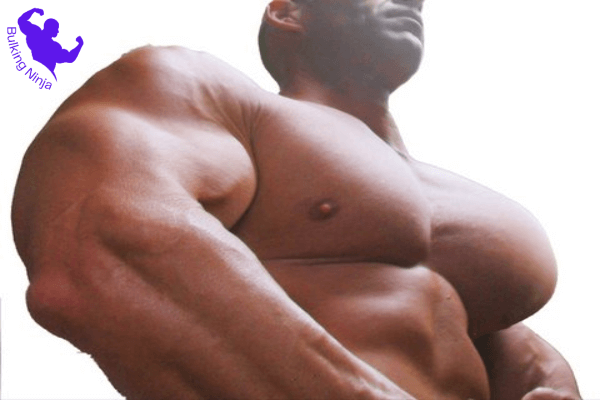
When it comes to the difference between gaining muscle mass and cutting, individuals often choose between two approaches: clean bulk and dirty bulk. During a clean bulk, people strategically consume a calorie surplus to promote weight gain, primarily in the form of increased muscle mass. This approach involves tightly controlled eating and high intensity resistance training to maximize strength gains.
On the other hand, a dirty bulk takes a more liberal approach to calorie intake, allowing for a higher quantity of food consumption. The goal remains the same: to eat in a strategic calorie surplus and promote muscle gains. Although the approach is more relaxed, individuals still engage in high intensity resistance training to boost muscle growth and strength gains. Let’s Start Your Bulking Journey with Surfing for Muscle Building.
In summary, the difference between gaining muscle mass and cutting lies in the approach individuals take to manipulate their calorie intake and promote muscle gains. Whether through clean or dirty bulking, individuals strategically consume a calorie surplus and engage in high intensity resistance training to achieve their desired muscle mass and strength gains. The key is to find a balance that suits individual preferences and goals while prioritizing proper nutrition and effective training techniques.
What is cutting?

Resistance training, including weight lifting, continues to play a crucial role during a cut. Although the intensity of weight lifting may be slightly lower compared to a muscle-gaining phase, it remains an essential component to maintain muscle mass while losing body fat. Factors such as the calorie deficit and less energy available during a cut may influence the intensity of weight lifting sessions. Let’s Start Your Bulking Journey with Important types of Pushups for Muscle Building.
Bodybuilders and athletes often incorporate cutting phases into their training regimen, either following a period of bulking or leading up to a competition or their competitive season. These individuals recognize the significance of achieving a lean and defined physique, and a cut helps them shed excess body fat while preserving their hard-earned muscle mass. By strategically implementing a cut phase, bodybuilders and athletes can optimize their performance and physique during competitions.
The difference between gaining muscle mass and cutting lies in the approach individuals take to their nutrition and training. While muscle gain focuses on a calorie surplus and muscle growth, a cut involves creating a calorie deficit to promote fat loss while maintaining muscle mass. By understanding the role of nutrition, energy balance, and incorporating appropriate training techniques, individuals, especially bodybuilders and athletes, can effectively navigate these phases to achieve their desired fitness goals and excel in their respective competitions.
How to start a bulk?
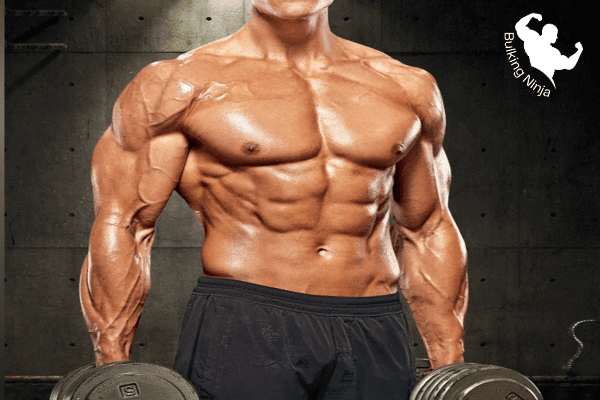
The process of bulking plays a significant role. To start the bulking phase, it is essential to determine your calories needed for maintenance, which is the amount of calories necessary to maintain your current weight.
Online calculators can assist in estimating this value accurately. Once you have determined your maintenance calories, you can tack on a calorie surplus of 10-20% to support weight gain, particularly in muscle mass. For instance, both men and women of average size can add extra calories to their daily consumption, based on their specific requirements.
During the bulking phase, paying attention to protein intake is crucial to support muscle growth. It is recommended consuming 0.7-1 gram of protein per pound of body mass. The remaining daily calories can be made up of a balance of carbohydrates and fats, tailored to individual preference and dietary needs. Tracking your progress throughout the bulking phase can be helpful, and smartphone apps provide a convenient way to monitor your daily intake and track your goals.
To ensure effective muscle gains during the bulking phase, incorporating high intensity resistance training is key. By maximizing your efforts in strength training, you can stimulate muscle development and attain your desired goals. It is important to weigh yourself regularly using a scale to track your advancement. Aiming for a weight gain of 0.25-0.5% of your body weight per week is a reasonable target to aim for during the bulking phase. Let’s Start Your Bulking Journey with Sports are best for Grow Muscle.
How to start a cut?

To start a cut, it is helpful to determine your maintenance calories, which are the number of calories needed to maintain your current weight. This can vary depending on factors such as body size, genetics, and activity level.
During a cut, the goal is to create a calorie deficit by subtracting a certain number of calories per day from your maintenance calories. This stimulates fat loss and helps you achieve your weight loss goals. By gradually reducing your calorie intake and following a well-designed diet, you can optimize fat loss while preserving muscle mass.
Research suggests that a gradual weight loss of around 0.5-1% per week is ideal for maximizing muscle maintenance. This can be achieved by combining a balanced diet with adequate protein intake and engaging in strength training. Protein intake plays a critical role in supporting muscle maintenance, and it is recommended to consume a range of 0.6-1.4 grams per pound of body weight. Resistance training helps preserve muscle mass during the cutting phase and contributes to a toned and defined physique.
A cutting phase is typically shorter than a bulking phase, lasting around 2-4 months. The duration of the cutting phase should be minimal to preserve muscle mass while effectively reducing body fat. By adhering to a well-structured cutting program tailored to your goals, you can navigate the cutting phase successfully and achieve the desired physique. read more about karate help to build muscles.
How To Gain Muscle Mass /Bulking?
Building muscle mass requires a dedicated task that demands patience, consistency, and effort. Here are some expert tips on how to effectively gain muscle mass and the difference between gaining muscle mass and cutting:
Task: Gaining muscle mass is not an easy task; it requires commitment and a focused approach.
Patience: Being patient is essential when it comes to building muscle mass as it takes time to see significant results.
Dedication: Dedication to your training and nutrition plan is crucial for achieving your muscle gain goals.
Consistency: Consistency is essential in both workout routines and dietary habits to promote muscle growth and maintain progress.
Lift Heavy Weights: Concentrate on compound exercises like squats, bench press, deadlifts, and rows to engage multiple muscle groups and stimulate growth.
Calorie Surplus: Consume a greater number of calories than your body needs for maintenance to provide the necessary energy for muscle growth.
Protein Intake: Adequate protein intake is important for repairing and building muscles. Aim for 1 gram of protein per pound of body weight.
Rest and Recovery: Allow your muscles sufficient time to repair and recover by incorporating rest days into your workout routine.
Track Progress: Maintain a record of your workouts,, food intake, and measurements to monitor your progress and make adjustments if needed.
Make Adjustments: As your body adapts, make necessary adjustments to your training program, diet, and other factors to continue making progress.
How To Get Shredded /Cutting?
Achieving a shredded physique involves the process of reducing body fat and showcasing the well-developed muscles you have diligently cultivated. To help you on your journey, here are valuable tips to attain that lean, chiseled appearance:
Body fat
Reduce body fat levels to achieve a lean and defined physique.
Muscles
Build and maintain muscle mass during the shredding process.
Nutrition
Be mindful of what you eat and ensure a balanced intake sure it supports your goals.
Calorie deficit
Consume fewer calories compared to what you burn body burns to create a calorie deficit.
Food tracking app
Use a mobile app to track your food intake and monitor your macronutrient targets.
Macronutrient targets
Set specific goals for your intake of protein, carbohydrates, and fats.
Calorie limit
Stay within a specific calorie range to maintain the desired deficit.
Weights
Integrate weightlifting into your daily regimen to preserve muscle mass.
Strength training
Focus on strength-building exercises like compound movements.
Compound exercises
Perform exercises such as squats, deadlifts, bench press, and rows to engage multiple muscle groups.
HIIT
Include high-intensity interval training sessions to maximize fat burning while preserving muscle.
Rest
Give your body ample time to recuperate and recharge.
Sleep
Make quality sleep a priority for optimal rejuvenation and overall health.
Recovery
Support your body’s repair and rejuvenation processes through proper rest and nutrition.
Health
Maintain a focus on overall well-being throughout your shredding journey.
Beach bod
Achieve a physique that you feel confident showing off at the beach.
Consistency
Prioritize quality sleep for optimal recovery habits for long-term progress.
Diet
Follow a nutrition plan that aligns with your goals and supports your shredding efforts.
Exercise habits
Establish consistent workout routines and habits to support your fitness goals.
Results
Track and celebrate the progress you make along the way.
Remember, getting shredded is a process that requires time, effort, and discipline. By incorporating these tips and maintaining consistency, you can achieve the desired results and unveil a lean, muscular physique.
What To Eat When Bulking And Cutting?
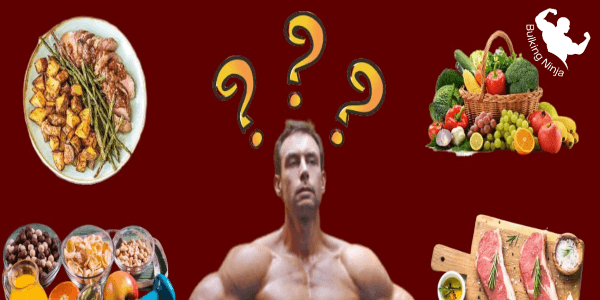
Certain foods can aid in the process of bulking, while others can assist in cutting.
Bulking foods
When it comes to the difference between gaining muscle mass and cutting, the choice of foods plays a crucial role. Here’s how these factors come into play.
Bulk focus on consuming nutrient-dense foods that provide the necessary fuel for rapid muscle growth and strength gains. Opt for foods that have a high calorie content to support the energy needs during the bulking phase.
Foods
Choose lean proteins such as beef, chicken, fish, turkey, and eggs to provide essential amino acids for muscle repair and growth. Ensure a well-rounded intake of macronutrients, nuts, and seeds to support overall health and provide a source of energy.
Include legumes, such as beans and chickpeas, which are excellent sources of protein and fiber. Opt for high-quality carbs like oats, quinoa, and whole grain pasta to provide sustained energy for workouts and muscle recovery.
Incorporate a variety of fruits and non-starchy vegetables to supply essential vitamins, minerals, and antioxidants.
Nutrients
Ensure you are getting a level intake of macronutrients (protein, carbohydrates, and fats) to support muscle growth and overall health. Pay attention to the micronutrient content of foods to provide the necessary vitamins and minerals for optimal body function.
Muscle
Emphasize the consumption of lean proteins to provide the building blocks necessary for muscle repair and growth. Regularly engage in strength training exercises to stimulate muscle growth and enhance strength gains.
Processed foods
Reduce the intake of processed foods as they are often high in added sugars, unhealthy fats, and artificial ingredients. Choose whole, unprocessed foods to ensure you’re getting the maximum nutritional benefits.
Dirty bulk and excess fat gain
Avoid the approach of a dirty bulk, which involves excessive calorie intake without regard for fat gain. Focus on a clean bulk, which emphasizes nutrient-dense foods and controlled calorie surplus to minimize excessive fat gain.
Promote
Choose foods that promote muscle growth, strength gains, and overall health. Prioritize nutrient-dense options to provide the necessary fuel for muscle development and recovery.
Occasional foods
Indulge in occasional foods like pizza or baked goods as a treat, but do so in moderation and within the context of an overall balanced diet. Be aware of portion sizes and select healthier variations whenever possible.
Remember, the difference between gaining muscle mass and cutting lies in the approach to nourishment. It is crucial to concentrate on consuming the right foods, maintaining a balanced diet, and making informed choices to support your goals.
Foods to limit
it is important to be mindful of the negative impact that highly artificially processed foods, saturated fats, and sweetened beverages can have on overall health and fitness goals. By making healthier choices and opting for nutrient-dense options, you can better support your muscle-building and cutting efforts.
Cutting foods
Cutting is a dietary approach that focuses on consuming specific foods to support weight loss and muscle maintenance. Here are some key points to understand about the difference between gaining muscle mass and cutting:
Focus
When cutting, the primary focus is on achieving weight loss and maintaining muscle mass through a targeted diet and nutrition plan.
Foods
Cutting involves selecting specific foods that are nutrient-dense and lower in calories to support gradual weight loss and promote a lean physique.
Nutrients
The foods chosen during cutting provide essential nutrients while reducing overall calorie intake.
Calories:
Cutting involves controlling calorie consumption to create a calorie deficit, which leads to weight loss.
Weight loss
The goal of cutting is to gradually lose body weight, primarily in the form of fat, while maintaining muscle mass.
Muscle maintenance
Cutting emphasizes the preservation of existing muscle mass through proper nutrition and exercise.
Lean proteins
Lean sources of protein such as poultry breast, seafood, tofu, and eggs are essential during cutting to support muscle maintenance and promote satiety.
Healthy fats
Including good fats from sources like olive oil, avocado, nuts, and seeds provides essential nutrients and helps maintain overall health.
Fibrous carbs
Including fibrous carbohydrate sources like brown rice, quinoa, and vegetables supports satiety and provides necessary nutrients while being lower in calories.
Lower sugar fruits
Choosing fruits such as apples, berries, and citrus fruits helps satisfy sweet cravings while keeping sugar intake in check.
Non-starchy vegetables
Non-starchy vegetables such as broccoli, cauliflower, and leafy greens are low in calories and high in fiber, aiding in weight loss and providing vital nutrients.
Beverages
Opting for hydrating options such as water, sugar-free flavored seltzer, and unsweetened coffee or tea helps maintain hydration without adding unnecessary calories.
Gradual approach
Cutting is a gradual process that focuses on sustainable weight loss over time, promoting healthy habits and long-term success.
Remember, cutting requires careful planning and adherence to a specific nutrition plan to achieve optimal results in weight loss while maintaining muscle mass. Consultation with a healthcare professional or registered dietitian is recommended to personalize your cutting journey based on individual needs and goals.
Should I Shred Or Gain First?
Deciding between shred and gain depends on fitness goals, physique, and health. Gain focuses on muscle mass and strength, while shred aims for a leaner body with defined muscles and lower body fat.
To achieve gain, prioritize nutrition and training methods that support muscle growth. Consume enough calories to fuel your body, lift heavy weights for progressive overload, and create a calorie surplus.
For shred, create a calorie deficit by consuming fewer calories than your body burns. Engage in high-intensity interval training (HIIT) or steady-state cardio exercises to stimulate fat loss.
Consider your current physique and body fat levels when deciding where to start. If excess body fat is present, prioritize shred before attempting to build muscle.
Can You Shred And Still Build Muscle?

Shredding and building muscle are two distinct processes that require different approaches to achieve the desired results. Here’s a breakdown of the key elements involved:
Shredding
Shredding involves the process of losing body fat while maintaining or building lean muscle mass. It requires focus, consistency, and a well-balanced approach to nutrition and training. The goal is to achieve a lower body fat percentage while preserving muscle definition.
Building Muscle
Building muscle focuses on increasing lean muscle mass and strength. It requires a combination of targeted training and proper nutrition to support muscle growth and recovery.
Remember, each individual’s journey is individual, and it’s crucial to customize your approach to align with your specific goals and preferences. By maintaining a positive mindset, staying committed, and seeking expert guidance when needed, you can achieve the desired results in your fitness-related objectives. Further read about wrestling for gaining muscles.
The Advantages Of Bulking And Shredding
Bulking and shredding are two approaches in bodybuilding with their own advantages and disadvantages. Bulking focuses on consuming more calories to increase muscle mass, while shredding aims to lower body fat percentage for a leaner physique with well-defined muscles.
The advantages of bulking include significant muscle gain, while the disadvantages involve the potential for unwanted fat accumulation. On the other hand, shredding takes longer but results in a leaner physique. Both approaches require discipline and consistency in terms of nutrition and training.
Discipline and consistency are key to avoid overeating and achieve optimal results. Bulking carries the risk of excess weight gain if not accompanied by enough protein intake, which may hinder muscle growth. Shredding requires strict adherence to a calorie-controlled diet and intense exercise regimens to burn body fat without sacrificing muscle mass.
The Disadvantages Of Bulking And Shredding
The disadvantage of bulking is the potential health problems associated with rapid weight gain, such as high blood pressure and elevated cholesterol levels. Conversely, rapid shredding may lead to muscle loss if not done correctly.
The choice between bulking and shredding depends on individual fitness goals and lifestyle habits. It is important to conduct thorough research and consult with experts to determine the most suitable approach for long-term success.
What Easier Bulking Or Cutting?
There is no definitive answer to whether bulking or cutting is easier as it varies from person to person. Some individuals may find bulking easier due to the increased calorie intake and muscle building focus,
While others may find cutting easier as it involves reducing body fat and revealing muscle definition. It ultimately depends on personal preferences, objectives, and specific circumstances.
Differences between bulking and cutting workouts
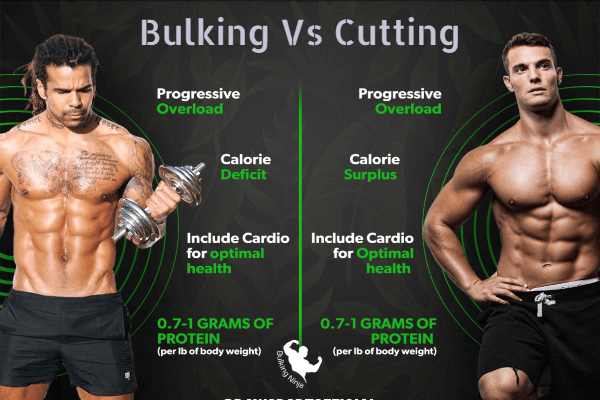
Some points mentions here about difference between bulking and cutting
Goals
Gaining muscle mass focuses on increasing muscle size and strength, while cutting emphasizes reducing body fat for a more defined physique.
Calorie Balance
Gaining muscle mass requires a calorie surplus to provide the energy needed for muscle growth, while cutting involves a calorie deficit to promote fat loss.
Training Approach
Building muscle mass often involves lifting heavy weights and focusing on strength training, while cutting may involve incorporating more cardio exercises and reducing calorie intake.
Time Frame
Gaining muscle mass is a long-term process that requires consistent effort over an extended period, while cutting phases are typically shorter and more focused on achieving specific aesthetic goals.
In summary, gaining muscle mass and cutting require different approaches, but both rely on dedication, consistency, and the right combination of training and nutrition.
By following expert tips and maintaining a positive mindset, you can achieve your muscle gain goals and make progress towards a healthier and more defined physique. Remember to prioritize proper rest, track your progress, and make adjustments as needed to continue seeing positive results on your journey to building muscle mass.
Frequently Asked Questions
Does Bulking And Cutting Have Different Workouts?
Yes, bulking and cutting do have different workouts. The workouts during the bulking phase involve more frequent and longer training sessions, focusing on adding muscle mass. This means spending more time at the gym and lifting heavier weights compared to the workouts during the cutting phase.
Is It Better To Cut Or Bulk?
The answer depends on your goals and preferences. If your primary goal is to gain muscle and strength, and you are not concerned about gaining some fat in the process, then bulking may be a good choice. On the other hand, if your goal is to lose fat and maintain muscle, cutting may be more in line with your goals.
Should You Cut First Or Bulk First?
It depends on your goals. Generally, it is better to bulk first if your goal is to build muscle. By bulking first, you can increase your muscle mass. Afterward, you can cut down any excess fat or weight you have gained during the bulking phase. However, the decision ultimately depends on your individual goals and preferences.
Which Is Harder Cutting Or Bulking?
In most cases, cutting is considered harder than bulking. However, it can vary from person to person. Professional bodybuilders typically bulk for most of the year and then cut when they near the competition season.
If you’re not planning to compete but still want to maintain a good physique year-round, bulking followed by cutting could be a more manageable approach. Ultimately, the difficulty of cutting or bulking depends on individual circumstances and goals.
Can You Lose Fat While Bulking?
Yes, it is possible to lose fat while bulking if you can sustain a lifting program and eat in a caloric deficit. In this scenario, your body can utilize its fat stores for energy while potentially building muscle mass. However, achieving this balance requires careful monitoring of calorie intake and proper training to optimize fat loss and muscle gain.
Is Bulking Harder Than Cutting?
Cutting is generally perceived as more challenging compared to bulking, although the difficulty can vary depending on the individual. Professional bodybuilders typically focus on bulking for the majority of
Conclusion
Bulking and cutting are two strategies commonly used by bodybuilders to gain muscle and lose fat.Bulking involves consuming calorie-dense foods to promote muscle gains and support muscle growth. Cutting, on the other hand, focuses on nutrient-dense foods to stimulate fat loss while preserving muscle mass.
Bodybuilders assess their current body composition and long-term strength goals to decide which strategy to start with.It is important to consult a healthcare provider before embarking on an aggressive bulk or cut, especially if you have underlying health conditions. These strategies are complementary and offer notable benefits, but it’s crucial to consider the potential downsides and make informed decisions based on individual goals and circumstances.
